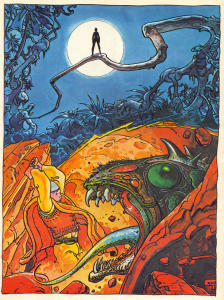For my
final post, I wanted to revisit and revise my post about Scott McCloud’s Understanding Comics. I want to start
off by saying that I don’t feel like I analyzed the comic anywhere near enough
in the first post so this is something that I’ve been meaning to do. This comic
is fantastic guide for comic book readers to view and understand why the artist
of the comic might have drawn something in a certain way. It breaks down and
explains important concepts that most comic book authors use to create a
successful comic. Besides helping readers understand the comics that they are
reading, Understanding Comics also
helps new comic book artists become familiar with the conventions seen in
modern day comics. The comic also teaches the reader how they, themselves see
comics and read them.
There
are many important concepts within the book, such as the importance of how
characters are depicted, and how important it is to understand the different
ways of progressing from scene to scene.
The comic itself is easy to read, utilizing the same conventions that it
is helping us understand. Its simplistic style and use of humor keeps the
reader interested and aids to help the reader process all of the information
that is being given. I think that anyone
who is interested in comics and has not yet read this, should do so. This comic
has helped me to understand and analyze the comics that I have read over the
course of this semester, as well as understand the thinking process that was
involved with creating it. Understanding
Comics stands true to its title. I am glad I was able to have the chance to
read it.



